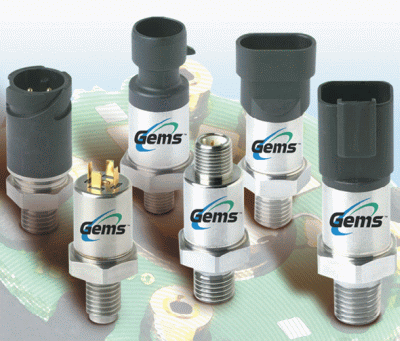 Mike Powers, product marketing director for Gems Sensors & Controls, explains how a package of electronics, combined with the latest CVD technology, is enabling pressure transducers to optimise operations across industry
Mike Powers, product marketing director for Gems Sensors & Controls, explains how a package of electronics, combined with the latest CVD technology, is enabling pressure transducers to optimise operations across industry
The capacity of pressure transducers to improve engineering efficiency has enabled the designers and engineers of these devices to offer evermore efficient and versatile components that can, at one end of the scale, serve in aggressive process conditions and, at the other, provide fine environmental control in clean room environments. As pressure transducers have increased in quality, so the price has reduced. As a result, high performance components are now available at affordable prices, making pressure transducers an ubiquitous presence across industry.
Production efficiency and product quality can be vastly improved through the use of pressure transducers and nowhere is that better proven than in the manufacture of electronic circuits such as those contained within pressure transducers themselves. In the clean room environments where these circuits are produced, ion implantation and ion beam etching requires fine pressure control over the chamber’s internal climate and air quality. To ensure process integrity, a distributed control system incorporating pressure transducers is used to monitor air recirculation and handling units. So how exactly do pressure transducers enable such accurate control? To understand this, we need to look inside one of these components and see how they work.
 A closer look
A closer look
A pressure transducer is designed to convert fluid pressure into an electrical output signal. Inside a pressure transducer is a strain gauge sensor mounted on the back of a stainless steel diaphragm, the face of which is in direct contact with the pressure media. Displacement of the diaphragm thus causes the strain gauge to flex, converting the information into electrical signals. The testing of these devices has resulted in some impressive statistics, measuring a high level of accuracy with almost zero drift over time and an operating life in excess of 100 million cycles. With such levels of performance, pressure transducers have proved invaluable in engineering, particularly in applications where accuracy is vital to plant safety or where equipment is difficult to access.
Valuable advances in electronics have been key to this advancement. The electronic packages that have been supplied with pressure transducers over recent years have enabled each sensor to be tuned to meet the specific requirements of each customer. These packages incorporate advanced ASIC (application specific integrated circuits) technology, which enhance performance and functionality. They can also be customised, offering a convenient and effective option that cuts costs when expensive and complex control technology is not needed. Indeed, the economic advantage of introducing ASIC has been significant – combined with improvements in volume manufacturing techniques, the introduction of ASIC has, in many instances, cut the cost of transducers so dramatically that manufacturers can now sell at approximately £30 a sensor that offers a level of performance previously associated with units that sold for ten times that figure.
The level of performance that these components are capable of also owes much to the advanced strain gauge technologies of sputtered thin film and chemical vapour deposition.
Further advances
Strain gauge sensors can be effectively manufactured using chemical vapour deposition (CVD) technology, which is capable of producing compact devices that provide high levels of accuracy with excellent hysteresis characteristics. CVD sensors can also be manufactured economically, since they are produced on wafers in large batches, using polysilicon deposited on a stainless steel substrate, with the strain gauge patterns being chemically milled. The CVD manufacturing process enables sensor assemblies to be mass produced in volume and at low unit cost.
Gems Sensors & Controls manufactures a range of transducers using CVD. Its 3300 Series pressure transducers possess a range of outputs, electrical connections and pressure ports, with pressure ranges from 1 to 16 bar, or 15psi to 200psi, and are capable of operating over a temperature range of -40°C to 125°C. They also offer a long operating life and resistance to over pressure, while the high temperature vacuum brazing of the stainless steel components during sensor production offers a strong and corrosion resistant structure with low hysteresis and creep.
Another highly effective technology in the production of transducers is sputtered thin film, a process whereby a solid target material is bombarded by energised particles, causing the material to release atoms. The atoms that are subsequently released are deposited in layers on a stainless steel beam, which is then etched and mounted on the reverse of a stainless steel diaphragm or sensor beam. The application of the sputtered thin film layer during the manufacture of pressure transducers results in a sensitive, robust sensor that is suitable for direct contact with almost all liquids, oils and gases.
The availability of high performance components at affordable prices has given pressure transducers a strong presence across industry and, as they continue to develop and improve, pressure sensors are likely to exercise a greater level of data acquisition and system control.

